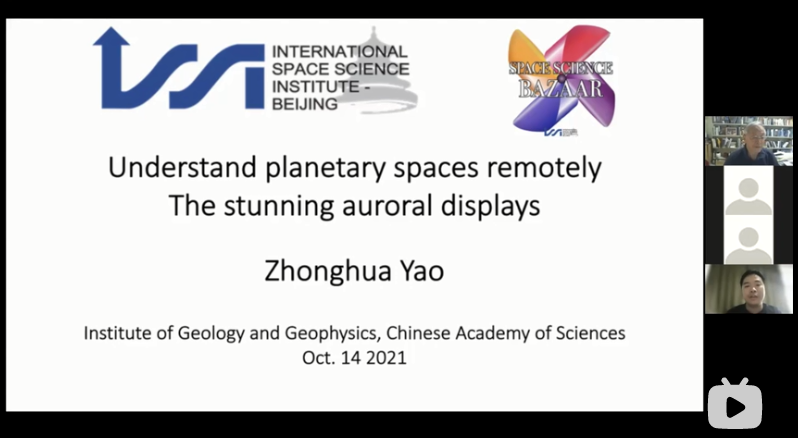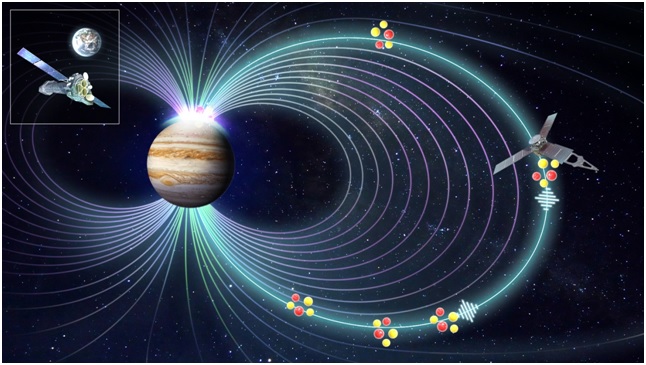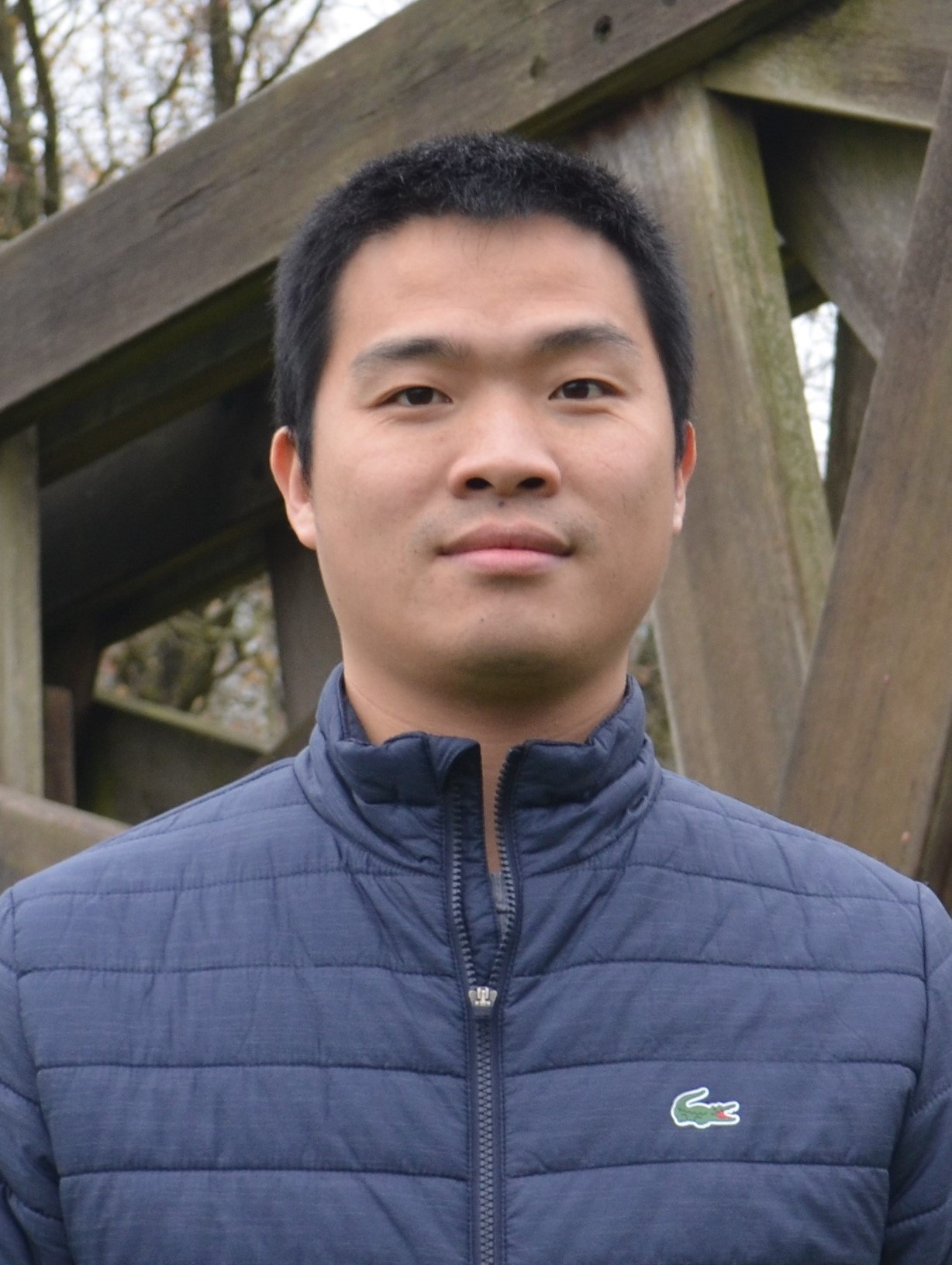Watch: Understand Planetary Spaces Remotely The Stunning Auroral Displays by Prof. YAO Zhonghua | Space Science Bazaar
On 14 October 2021, Prof. YAO Zhonghua gave an online seminar on Undertand Planetary Spaces Remotely the Stunning Auroral Displays.
The lecture was organized in the context of the ISSI-BJ "Space Science Bazaar" series that young scientists present their work within International Team Program of ISSI-BJ.

About the webinar

In 1957, the first human-made satellite Sputnik 1 was successfully launched and entered the Earth's orbit, inaugurating the space age. Since then, space-borne technologies have played a more and more important role in our daily life, up and beyond to reach other planets, inside and outside our solar system. We have since learnt much about planets and their environment, e.g., that space environments of Earth-like planets are mainly driven by the solar wind, while the ones of giant planets are driven by both external(solar wind) and internal sources (particles originating from the moons and rings).
Auroral emissions, including airglow, represent an important phenomenon for the remote study of space environment, as they have been observed on all planets of the solar system—with an exception of Mercury. Auroras share many similarities at different planets, but key differences have also been found, indicating both common driving mechanisms and unique planetary environments for each planet. Therefore, they may be seen as a universal phenomenon that most likely also takes place in other planetary systems. But what’s the purpose of studying space environments and planetary auroras?
The analysis of planetary auroral emissions provides crucial information to the understandings of the perturbations of particles and magnetic fields in planetary spaces. Charged particles and electromagnetic waves are key elements in space, and their perturbations could produce energetic particles hazardous to spacecraft and could result in geomagnetic perturbations threatening ground facilities, e.g., the power grid.
In this talk, Dr. Yao Zhonghua will introduce the auroral phenomena at the planets in our solar system, and he will discuss how we diagnose planetary space environments using the remotely detected auroral emissions.
About Prof. YAO Zhonghua

